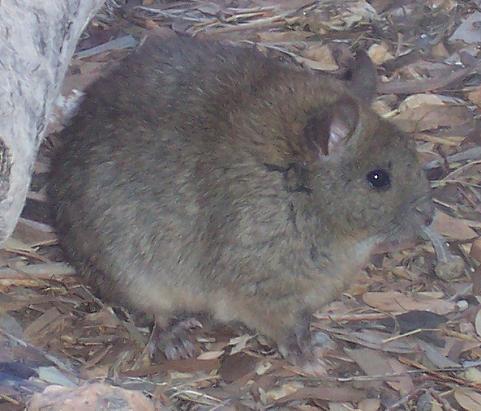
Greater stick-nest rat
Order : Rodentia
Suborder : Sciurognathi
Family : Muridae
Subfamily : Murinae
Species : Leporillus conditor
The Greater stick-nest rat, house-building rat is listed as Endangered (EN), considered to be facing a very high risk of extinction in the wild, on the IUCN Red List of Threatened Species
Namings for the greater sticknest rat
A young / baby of a greater sticknest rat is called a 'kitten, nestling, pinkie or pup'. The females are called 'doe' and males 'buck'. A greater sticknest rat group is called a 'colony, horde, pack, plague or swarm'.Countries
AustraliaSome facts about the
Greater stick-nest rat
Adult weight : 0.333 kg (0.7326 lbs)
Maximum longevity : 5 years
Female maturity :227 days
Male maturity : 240 days
Gestation : 38 days
Weaning : 36 days
Litter size : 2
Facts about the greater stick-nest rat
The greater stick-nest rat (Leporillus conditor) is listed as PRESUMED EXTINCT on the schedules of the NSW Threatened Species Conservation Act.
The Greater Stick-Nest Rat (Leporillus conditor) The Greater Stick-nest Rat is a threatened native rodent.
Three threatened mammal species have already been reintroduced onto the island: Burrowing Bettong (Boodie) Shark Bay Mouse Banded Hare-wallaby The reintroduction of the Western Barred Bandicoot and Greater Stick-nest Rat is planned in the near future.
Greater stick-nest rats are critically endangered. (Full text)
The Greater Stick-nest Rat is the world's rarest rodent. (Full text)
Leporillus conditor is a predominantly ground-dwelling, herbivorous rodent of semi-arid, perennial shrubland habitats, which builds nests of interwoven sticks for protection from the elements and from predators. (Full text)
The cute greater stick-nest rats are very small, docile rodents with round ears. (Full text)
More animals beginning with G
